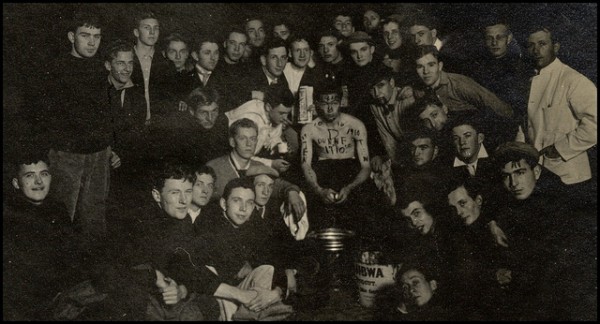
Hazing has been in the news a lot recently. It exists across a variety of settings, including sports and the military.
Why does hazing occur? Some research discusses the function of hazing as rites of passage or as an expression of group solidarity. Hazing can bring members together, validate one another in the group’s eyes, symbolize transition into group membership, bolster group cohesion, and create group conformity within particular hierarchies.
- Hank Nuwer. 2004. The Hazing Reader. Bloomington, IN: Indiana University Press.
- Caroline F. Keating, Jason Pomerantz, Stacy D. Pommer, Samantha J.H. Ritt, Lauren M Miller, and Julie McCormick. 2005. “Going to College and Unpacking Hazing: A Functional Approach to Decrypting Initiation Practices Among Undergraduates.” Group Dynamics: Theory, Research, and Practice 9(2): 104-126
- Stephen Sweet. 1999. “Understanding fraternity hazing: Insights from symbolic interactionist theory.” Journal of College Student Development 40(4):355-364.
Research on insider’s attitudes towards hazing highlights interesting dynamics within organizations. Individual members often have negative thoughts about hazing, but individuals are unlikely to protest the practice in-group settings. Power dynamics within those groups normalize hazing and silence opposition to it.
- Judy L. Van Raalte, Allen E. Cornelius, Darwyn E Linder, and Britton W Brewer. 2007. “The relationship between hazing and team cohesion.” Journal of Sport Behavior 30(4): 491-507.
- Donna Winslow. 1999. “Rites of Passage and Group Bonding in the Canadian Airborne.” Armed Forces & Society 25(3): 429-457.
The research suggests that hazing takes on a particular character within Greek Letter Organizations (GLOs). In fraternities, for example, where membership and group identity are constructed around ideas of the “all-male” group, hazing can serve as a validation of masculinity and a suppression of femininity. In addition, in GLOs that have been historically raced, hazing can express racial identities, in-group unity, and belonging.
- Elizabeth J. Allan. 2009. Hazing in View: College students at Risk. Collingdale, PA: DIANE Publishing.
- Ricky L. Jones. 2004. Black haze: Violence, sacrifice, and manhood in Black Greek-letter fraternities. Albany, NY: SUNY Press.

Comments